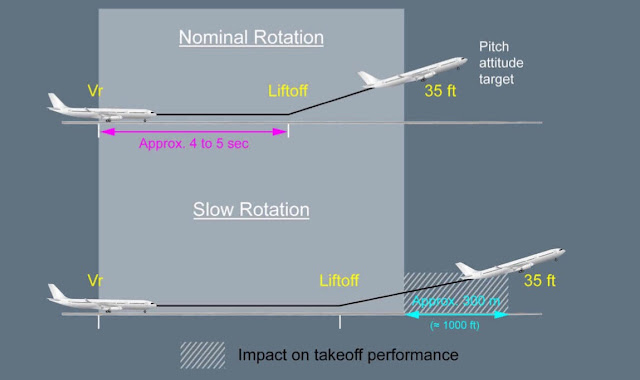The standard rotation rate for a typical transport category aircraft is 3 degrees per second. This means, that when the rotation speed is reached, the pilot should smoothly pull back on the controls to a defined pitch attitude. The pitch attitude varies from aircraft to aircraft. For most jet aircraft, the target is a pitch attitude of 12 to 15 degrees. Usually, lift-off should occur 4 to 5 seconds after the rotation speed. This will ensure that certified take-off performance is achieved.
If the rotation rate is slowed down, the aircraft will pass more ground without getting airborne. This will lead to an increase in take-off distance.
For all transports certified under CS-25, two take-off distances are calculated. One is where the aircraft takes off with all engines operative to the 35 ft screen height multiplied by a factor of 1.15. The other is calculated with one engine inoperative without the additional factor. In most cases, for a twin-engine aircraft, the latter is limiting as the loss of an engine has a significant effect on the climb performance of the aircraft. This makes it more critical for a pilot to adhere to proper rotation techniques during an engine failure. In a four-engine aircraft, quite obviously, the loss of an engine does not affect the performance that much and it is take-off is limited by the former. So, during everyday operations, a quad jet requires more precise control from the pilots to achieve the advertised performance.






0 Comments